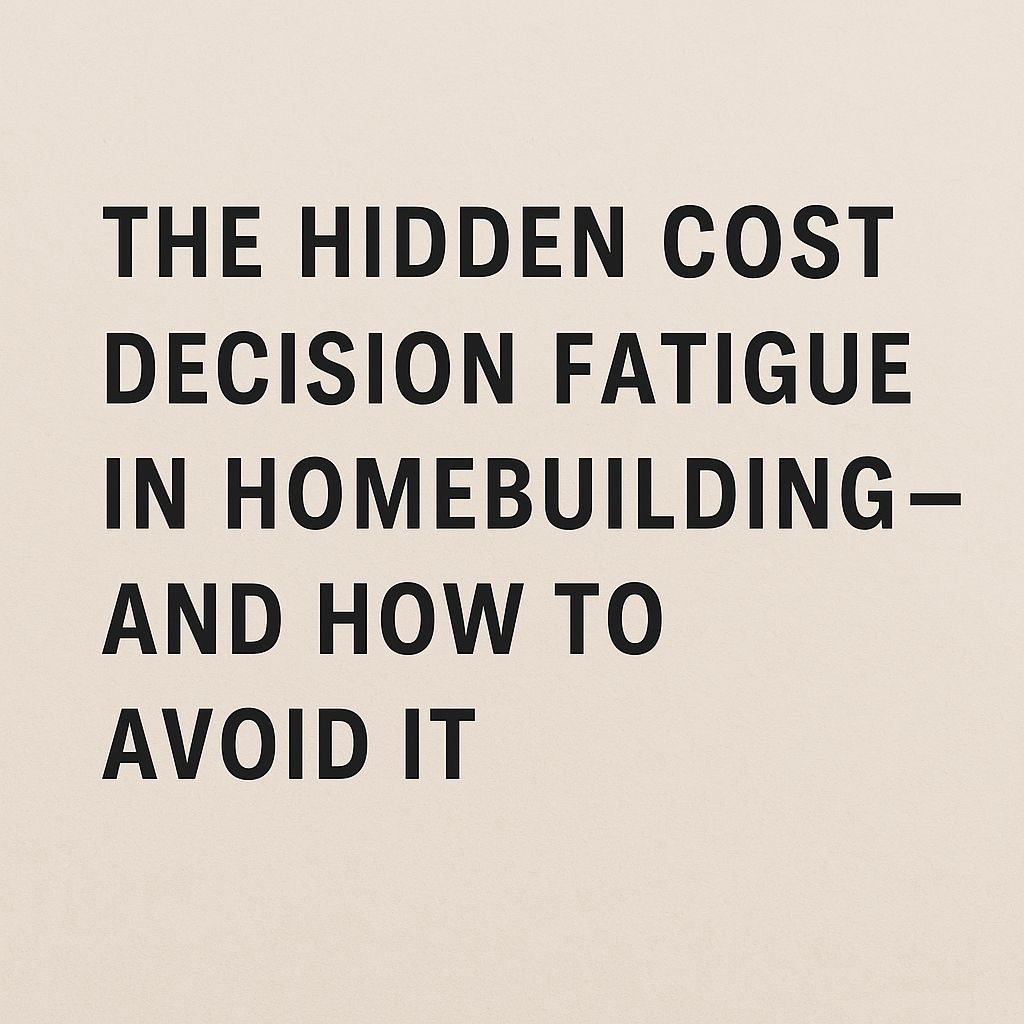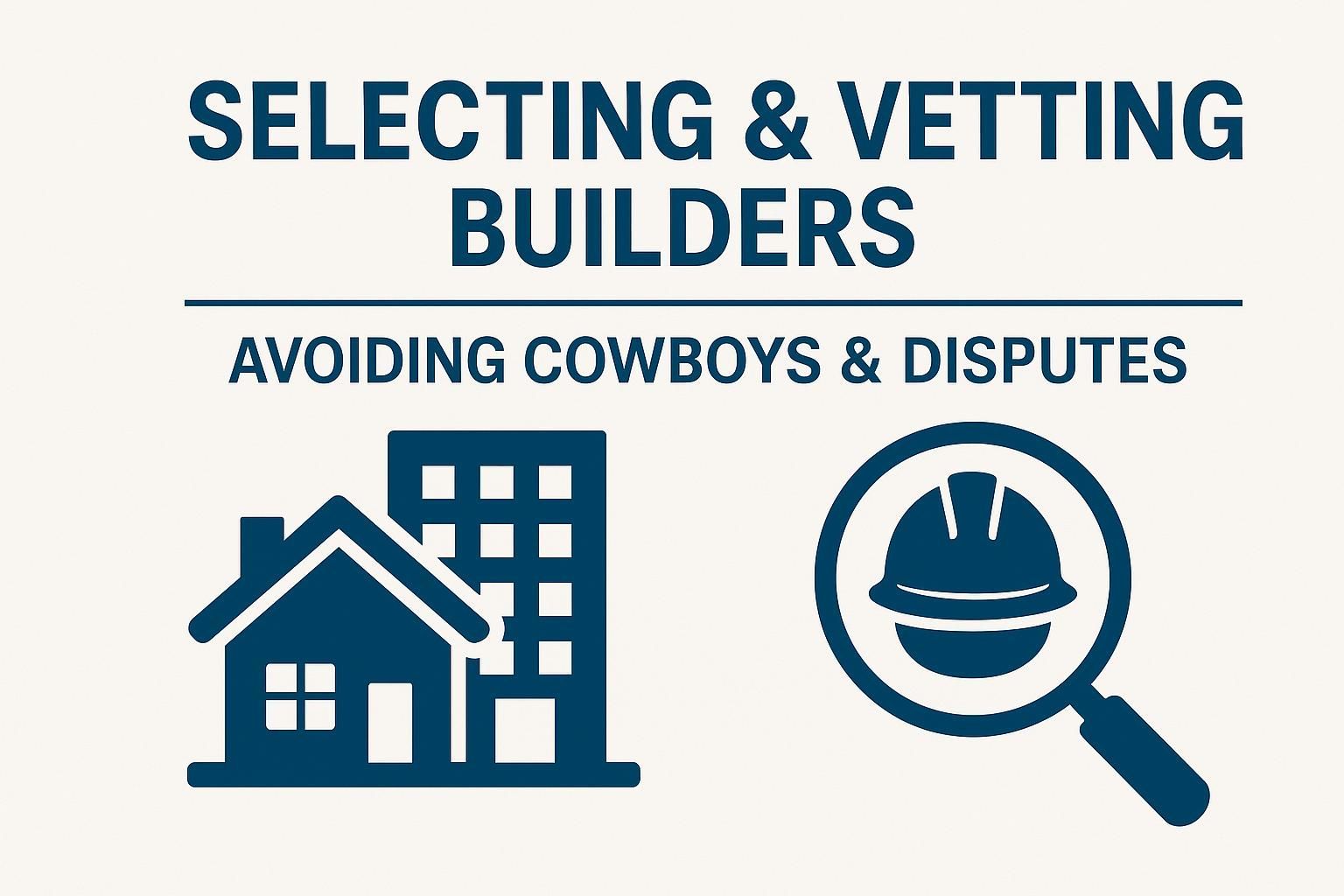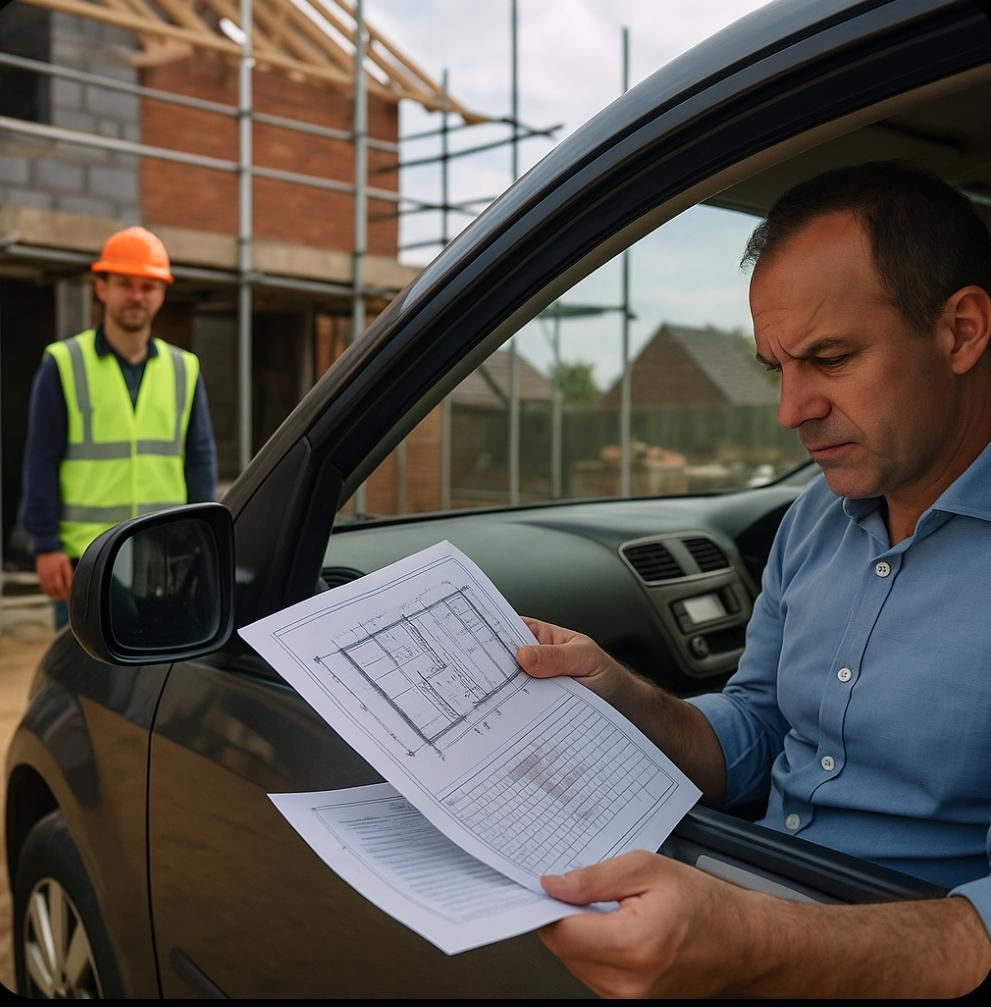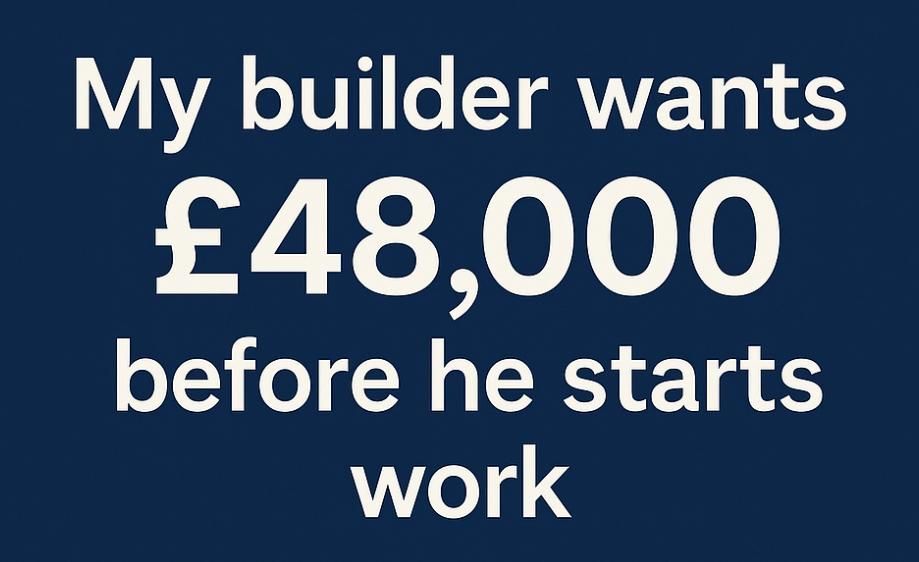The Hidden Cost of Decision Fatigue in Homebuilding – And How to Avoid It

By Maria Parker, on behalf of The Building Guidance Partnership
After years spent supporting homeowners through renovations, refurbishments, and major house builds, I have come to recognise one of the most underestimated threats to a smooth project: decision fatigue.
It is not something most people anticipate. They assume the hardest parts will be structural – digging foundations, handling planning permission, or getting the budget right. But time and again, I have seen confident, capable clients brought to a standstill by the weight of ongoing decisions.
And when decision-making slows down, costs rise, timelines stretch, and tension builds – particularly between homeowners and their builders.
Let me explain, and offer a few ways to avoid falling into the same trap.
What is Decision Fatigue?
In simple terms, decision fatigue is mental exhaustion caused by the sheer number of choices you must make. During a house build or renovation, these decisions start early and come thick and fast:
• Where should the sockets go in the kitchen?
• What colour grout do you want in the bathroom?
• Should that internal wall be moved by 200mm?
• Brass, black, chrome or stainless steel fittings?
• Is that the final position for the staircase?
Each choice might seem small. But taken together – over weeks or months – they can become overwhelming. At some point, the brain starts resisting further decisions. People become indecisive, irritable, or worse, disengaged. And that is where delays creep in.
Case Study 1: A Delayed Kitchen Because of a Tap
One client, mid-way through a large refurbishment in West London, stalled an entire kitchen installation for nearly three weeks over a decision about a boiling water tap.
It was not just the tap. It was also the worktop cut-out size, the under-sink space, the filtered water compatibility, the colour matching, the brand reliability, and the energy usage. Each question led to another.
Eventually, the builder had to move to another part of the house while they waited – which not only slowed things down but resulted in added costs due to subcontractor scheduling changes.
This delay could have been avoided.
How Builders and Project Coordinators Can Help
As professionals, we need to recognise that clients are not builders. They are not used to making dozens of technical decisions a week. Support is essential. Here is how we approach it at The Building Guidance Partnership:
1. Structure the Decision-Making Process
We break decisions into phases. For example:
• Stage 1: Planning-Level Choices – room layout, extension sizes, stair positions.
• Stage 2: Services & Infrastructure – lighting zones, socket locations, plumbing routes.
• Stage 3: Finishes & Fixtures – tiles, taps, cabinetry, flooring.
• Stage 4: Final Details – door handles, light switch styles, paint finishes.
By spreading the load and giving clients clear deadlines, we help them feel more in control.
2. Provide Shortlists Rather Than Endless Options
Builders and designers can present two or three suitable choices – not fifty. This is particularly valuable when a decision has cost or structural implications.
We had a client in Harrow who was agonising over bi-fold doors for the rear extension. Instead of overwhelming him with catalogues, we presented a shortlist of three suppliers (each with known reliability and pricing), with a simple pros-and-cons table. Decision made that same week.
3. Create Mock-Ups or Use Visualisation Tools
Many people struggle to picture what a change will look like. Builders can offer mock-ups, 3D renders, or even mark positions on-site with tape or chalk.
I recall a project in Finchley where a couple could not agree on where the island unit should go. The builder measured and taped it out on the floor, then brought a few chairs in so they could test how it felt to move around. The decision was settled that same afternoon.
Case Study 2: Stair Design Delaying the Whole Build
A young family undertaking a loft conversion near Watford became paralysed by indecision over the design of their new staircase.
Should it turn left or right at the landing? Should it have open treads or be fully closed? What about under-stair storage?
These decisions affected the wall placements, the lighting layout, and the delivery time of key materials. Because no one pushed for resolution, the entire first fix was delayed.
This is where an experienced builder or coordinator adds real value. By explaining dependencies and helping to visualise impact, they can gently push the process forward.
Builders: Communicate the Consequences of Delay
One of the biggest complaints I hear from builders is: “The client is taking too long to decide.” But from the client’s point of view, they often do not realise how serious a delay can be.
That is why I encourage all builders to clearly explain the knock-on effects:
• “If you do not confirm the lighting this week, the electrician will not return until next month.”
• “We need the tile choice by Tuesday to finish the waterproofing on time.”
• “Your delay in choosing the bath has now pushed back the floor tiling, which affects the joiner’s schedule.”
Transparency builds trust. And it encourages clients to focus their attention where it is most needed.
How Homeowners Can Protect Themselves
If you are about to begin a building or renovation project, here is how you can reduce the risk of decision fatigue:
• Prepare early: Visit showrooms, look through Pinterest or Houzz, and narrow down your preferences in advance.
• Make a scrapbook or vision board: This helps professionals quickly understand your style and avoids repeating the same discussion.
• Rely on professionals: Engage a project manager, designer, or an experienced builder who can guide you and reduce the burden.
• Set time aside for decisions: Make sure you are not trying to squeeze key discussions in between meetings or while juggling childcare.
Closing Thoughts
Every successful building project relies not only on bricks, steel, and timber – but on thousands of decisions made at the right time. Decision fatigue can quietly erode the best-laid plans unless recognised and tackled early.
At The Building Guidance Partnership, our role is not just to manage logistics. It is to protect clients from overwhelm, keep the project flowing, and help everyone – builders included – stay on track.
If you are about to start a renovation or extension, speak to us. A little guidance at the right time can prevent weeks of delay and thousands in extra cost.
Maria Parker
The Building Guidance Partnership
Helping homeowners make confident decisions and complete builds on time and on budget.



